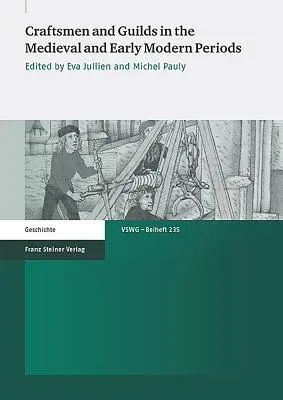Craftsmen and Guilds in the Medieval and Early Modern PeriodsPaperback, 10 June 2016

Qty
1
Turbo
Ships in 2 - 3 days
Only 2 left
Free Delivery
Cash on Delivery
15 Days
Free Returns
Secure Checkout

Print Length
316 pages
Language
English
Publisher
Franz Steiner Verlag Wiesbaden GmbH
Date Published
10 Jun 2016
ISBN-10
3515112359
ISBN-13
9783515112352
Description
Product Details
Book Format:
Paperback
Country of Origin:
GB
Date Published:
10 June 2016
Genre:
Medieval (500-1453) Studies
ISBN-10:
3515112359
ISBN-13:
9783515112352
Language:
English
Location:
Stuttgart
Pages:
316
Publisher: